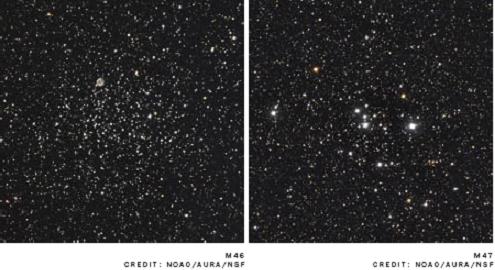Charles Joseph Messia, later the avid comet hunter, compiled an extraordinary catalog in which he described "deep sky bodies" - celestial bodies of spectacular beauty, located far away in space
Ofer Yaron, Galileo

Apart from stars ("suns") that belong to our galaxy, various types of bodies are visible in the sky, which are not points but rather spread/blurred (fuzzy objects), with an angular diameter and dimensions that can be distinguished (through optical means or sometimes even with the unaided eye).
These bodies include various star clusters and nebulae (clouds of gas and dust found in the interstellar medium), as well as distant galaxies (at distances of millions to billions of light years) of their various types - spirals, ellipticals and other hybrid structures. Other "spread" bodies, much closer to us than the other bodies we have just mentioned, are those occasional comets which, as they approach the sun, develop a halo and tails around their small, solid nucleus, which compare to their blurred and elongated appearance.
These bodies were precisely the field of expertise of a French astronomer who lived in the years 1817-1730, aka Charles Joseph Messier, later the avid comet hunter. One of Messia's first significant tasks, as a young astronomer, was to calculate the position of Halley's comet and re-locate it. The comet was indeed rediscovered in January 1759, and this success spurred Messia to look for more comets. In the following forty years, he discovered about twenty comets, and won recognition and many appointments.
But Messia's long-lasting fame rests mainly on a catalog he compiled, in which fixed bodies he observed are numbered (for which it was clearly determined that they were not comets) that have a blurred appearance, and therefore may mislead and give the impression that they are comets. Messia's famous catalog of "deep-sky objects" (deep-sky objects), was originally created, as mentioned, simply to avoid mistakes in identifying comets, and not necessarily for the purpose of mapping and explicitly marking all the bodies mentioned in the catalog.
Messia discovered independently (that is, simultaneously with the others but independently) the first two bodies on the list, M1 - the Cancer Nebula (which is a supernova remnant), and a globular cluster in the Aquarius group - M2. In 1764 he exclusively discovered a globular cluster that became third on the list, and then continued a systematic search and reached number 40 by the end of that year. The first version of the catalog, up to number 45 (not the Pleiades, or the seven sisters - the open star cluster that became the symbol of the car manufacturer Subaru), was published in 1774, and in 1781 a catalog was published that already contained 103 bodies.
Today, the catalog numbers 110 bodies (by the way, not all of them were discovered by Messia himself), including celestial bodies of spectacular beauty, all of which can be identified using medium-sized telescopes.
It is not for nothing that a type of event common among amateur astronomers, the "Messiah Marathon" is named after Messia. In this event, astronomers equipped with telescopes and other valuable observational aids gather together, with the aim of observing during one night (or several consecutive nights) as many objects from the catalog as possible. Such events are also held in our small country (one of the popular places is the Ramon Crater, for its desert beauty and the lack of lighting in its surroundings), and even if not as part of an official Messia marathon, then at every observation ("star party") bodies from the Messia catalog make up a significant part of the observed bodies.
We note that there are several other important catalogs dedicated to non-stellar celestial bodies. One catalog, which is a kind of complement to the Messia catalog and includes a similar amount of bodies (109) is called the Caldwell catalog. This catalog, penned by the English astronomer Patrick Moore, was first published in 1993. Another catalog, the NGC (New General Catalogue, published in 1888, is actually a union of several previous catalogs of non-stellar bodies (galaxies, star clusters, nebulae.) The NGC contains almost 8,000 bodies, and two catalogs of the completeness, which came out after it (the Index Catalogs) together contain more than 5,000 more bodies.
Yadan Astrophysics 4 - Galaxies
https://www.hayadan.org.il/BuildaGate4/general2/data_card.php?Cat=~~~617117363~~~56&SiteName=hayadan
